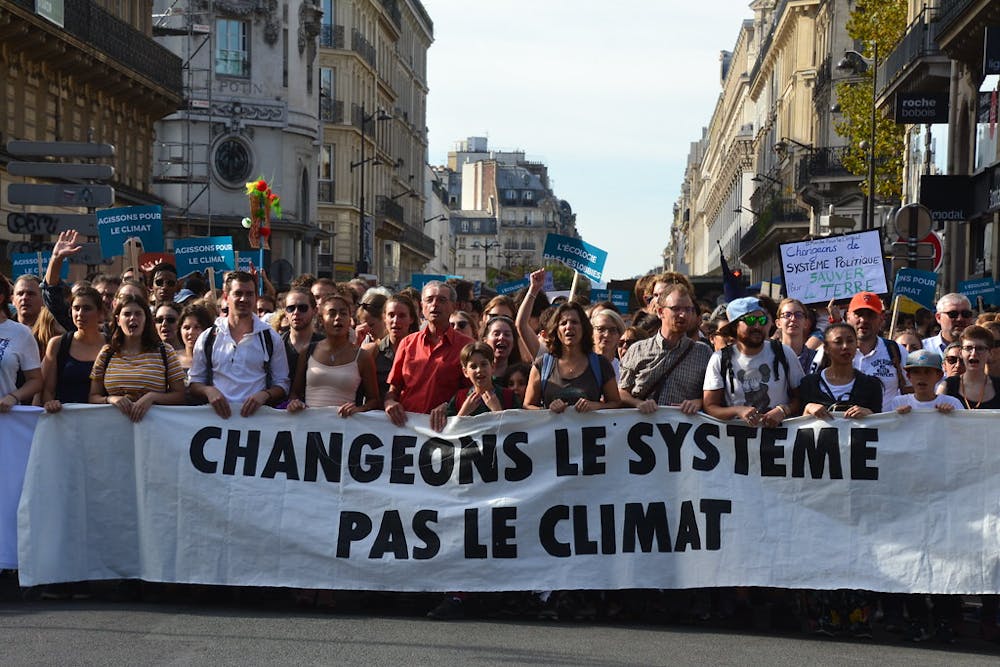
Earlier this month, President Joe Biden delivered his State of the Union Address, noting that there is a still lot more to do for climate change reform. Looking at this remark as a climate change columnist, I recognize there has been some headway in climate change reform, but it seems that President Biden glossed over properly discussing the issue of climate change. This makes me wonder: Are we doing enough?
According to the United Nations Climate press release of Oct. 26, 2022, we are not. The goal of curbing climate change is to prevent the 1.5°C increase in global temperatures. However, according to the press release, while global gas emissions have a downward trend, it is not enough to stop that increase.
So, we’re not doing enough, but what do we do about it? As I have previously mentioned, it is very difficult to take on the problem of climate change on an individual level and create change, especially when it seems that entities like fossil fuel corporations are on a much larger scale. Therefore, corporations should really have some responsibility. But, it seems that corporations don’t care — most either lack strong enough promises to combat their emissions or don’t have any at all.
It seems that it’s the responsibility of those who care to make a change, but how? Activism might be the answer.
Climate activists like Greta Thunberg set the standard for activism. She has continuously worked to bring awareness to climate change injustices, even going as far as getting arrested for protesting the building of a coal mine in Germany.
It is possible that you have also heard about how art is being involved in climate change protests. Just Stop Oil, an activism group protesting the creation of new oil and gas projects, deface paintings to bring awareness to climate change. This has included members gluing themselves to Leonardo da Vinci’s The Last Supper and throwing tomato soup at Van Gogh’s Sunflowers.
Just Stop Oil engages in protests that are nonviolent civil resistance, including strikes and boycotts. However, while nonviolent, the protests include possible destruction and defacing of art, which could anger a lot of people.
When organizing such protests, we must think about the way the public will perceive them. The goal of a protest is to start a discussion and create change, but you want the discussion to motivate or allow people to understand the purpose of the protest. Obviously, the Just Stop Oil protests will bring attention to the protest itself and the movement, but, we must consider whether such protests are useful in the long run.
In both protests, protestors were arrested but for different reasons. Thunberg was arrested for entering a coal site for fear it could have collapsed, while the Just Stop Oil protestors were arrested for attempting to deface property. Someone who is reading this article and is not familiar with their mission statement might be inclined to be angrier rather than supportive of the Just Stop Oil protests. Meanwhile, one may feel more positive about Thunberg’s protest given that she did not bring harm to any objects or people.
Protests need to be impactful enough to bring awareness and can cause disruption when needed, but they should not be so negative that the protest is looked down upon and loses its purpose. Just Stop Oil’s protests should be more specific and less polarizing. The goal of any protest is not only to bring awareness but also to bring change.
For the purpose of climate change reform efforts, I believe that negative attention toward the topic drives people away from wanting to create change and instead pushes people toward feeling apathetic. While other topics or movements may require more persistent and disruptive protests, climate change protests should be disruptive in a way that mirrors the disruption climate change will have on daily life.
Tanvi Narvekar is a senior from the Bay Area, Calif. majoring in Neuroscience and Psychology. Combating Climate Change is an ode to her passion for climate change action and helping with its mitigation. The goal of the column is to educate about current events and future action regarding climate change.





